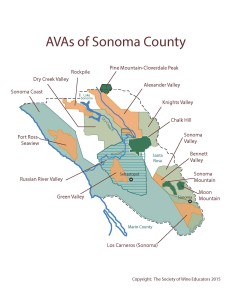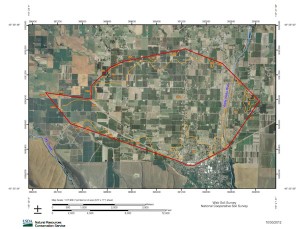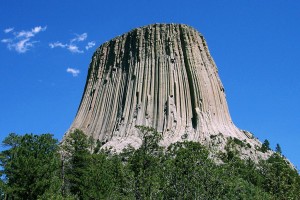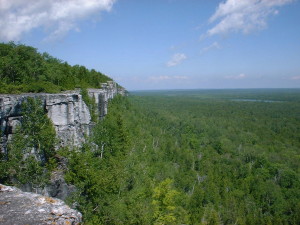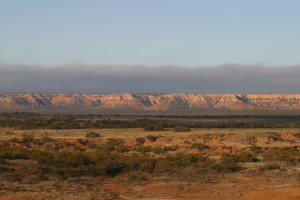 It seems that new AVAs are popping up all over – from the 11 new AVAs within Paso Robles late last year, to wines being produced using the latest when did that happen AVA. It led me to wonder: Just what is the process to create a new AVA?
It seems that new AVAs are popping up all over – from the 11 new AVAs within Paso Robles late last year, to wines being produced using the latest when did that happen AVA. It led me to wonder: Just what is the process to create a new AVA?
To start my research, I did a quick read of the “Alcohol and Tobacco Tax and Trade Bureau (TTB) American Viticultural Area (AVA) Manual for Petitioners.” Trust me on this – its heavy on the legalese so I read it – so you don’t have to!
Here are the basics:
The Law: The Federal Alcohol Administration Act (FAA Act) authorizes the Secretary of the Treasury to prescribe regulations for the labeling of wine, distilled spirits, and malt beverages. The FAA Act provides that any such regulations should, among other things, prohibit consumer deception and the use of misleading statements on labels and provide the consumer with adequate information as to the identity and quality of the label product. This includes the regulations pertaining to the establishment of American Viticultural Areas (AVA) and the use of AVA names on wine labels.
The Definition: As defined by the TTB, an AVA is a distinct grape-growing region having distinguishing features, a name, and a delineated boundary established by the TTB. The use of an AVA name on a label allows vintners and consumers to attribute a given quality, reputation, or other characteristic of a wine made from grapes grown in a certain area to its geographical origin.
The Steps: Anyone can petition for a new AVA, but there are specific steps and criteria involved.
- Name Evidence – the proposed name must directly relate to the proposed AVA location, but avoid conflict from similar geographical locations or existing brand names.
- Boundary Evidence – explain why the boundary of the proposed AVA is drawn the way it is.
- Distinguishing Features – explain the distinguishing features of the proposed AVA that supports the name and boundary of the AVA.
- If the proposed AVA is located within an existing AVA, the proposed AVA must identify attributes that are consistent with the existing AVA, but also explain how the proposed AVA is distinct from the existing AVA to warrant recognition as a separate AVA.
The Petition: Once the TTB receives the petition they determine if it meets all the above requirements as well as sufficient evidence to authorize a new AVA. The petition is then published and the public is invited to comment on the proposed AVA. This period of comment usually lasts about 60 days. Once closed the TTB takes these comments into consideration prior to the final ruling.
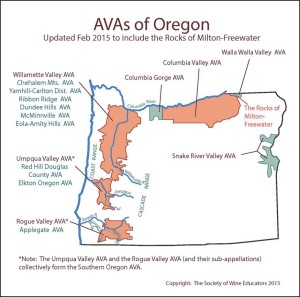 The AVA petitioning and rulemaking process frequently takes multiple years to complete.
The AVA petitioning and rulemaking process frequently takes multiple years to complete.
So now that we have covered the basics, I wanted to take a closer look at a proposed AVA , The Rocks District of Milton-Freewater and follow its process.
Proposed AVA “The Rocks District of Milton-Freewater”
First a review of the official “Petition to establish The Rocks District of Milton-Freewater.”
The Proposal: The proposed establishment of The Rocks District of Milton-Freewater AVA was first posted on February 26, 2014. This new proposed AVA encompasses 3770 acres that feature very rocky soils. The area currently contains approximately 250 acres of vineyards and three wineries.
The Evidence: The Name evidence is covered with “The Rocks District of Milton-Freewater” that locally refers to the cobblestone rich vineyard soils of the Walla Walla River alluvial fan known as “The Rocks.” I found it interesting that not only were publications submitted as evidence, but also numerous internet sources.
The Boundary evidence was devised to enclose the central part of the Walla Walla River alluvial fan that features this unique basalt cobblestone soil. Within the proposed AVA boundary, the cobblestones appear readily at the surface whereas areas outside the proposed AVA boundary the soil is typically silt loam without cobblestones.
The Distinguishing feature must be the rockiness of the soils. It is stated that 97% of the ground within the AVA boundary are fist-sized, river-smoothed basalt cobblestones. These stones stretch down several hundred feet and are so heavy and densely packed that crowbars are needed to plant vines. Back in 2009 when I was in Walla Walla there was great excitement by the winemakers about the quality of fruit they were getting from “The Rocks”. The official petition states that the area has been famous for the fruitfulness of it’s stony soils for over 100 years. Syrah is the star of this new AVA with bold, earthy aromas locally referred to as “The Rocks funk.” The wines are savory and meaty with additional notes of olive, floral, and mineral.
Since this proposed AVA resides within Walla Walla Valley AVA, the author of the petition had a delicate balance of showing the uniqueness of this proposed AVA while still maintaining its rightful place within the existing AVA.
 The Twist: One aspect of this proposed AVA that stood out; is that it is solely located in Oregon, while Walla Walla Valley AVA is located primarily in Washington with some cross over into Oregon. This aspect also brought about the most public comments during the AVA petition process. Since this sub-AVA does not cross the Washington state border only wineries with an Oregon production facility will be able to use “The Rocks” on their labels, even if the winery is located within the larger Walla Walla Valley AVA.
The Twist: One aspect of this proposed AVA that stood out; is that it is solely located in Oregon, while Walla Walla Valley AVA is located primarily in Washington with some cross over into Oregon. This aspect also brought about the most public comments during the AVA petition process. Since this sub-AVA does not cross the Washington state border only wineries with an Oregon production facility will be able to use “The Rocks” on their labels, even if the winery is located within the larger Walla Walla Valley AVA.
The petition names 19 wine producers that have vineyards within the proposed AVA although only three of these producers have winery facilities within the proposed AVA. I anticipate more wineries will establish facilities here due to the AVA requirements.
The Verdict: At last the Final Verdict! The TTB has given the proposed “The Rocks District of Milton-Freewater” AVA approval. The AVA lies entirely within the Oregon portion of Walla Walla Valley AVA which, in turn, lies within the Columbia Valley AVA. The TTB filed the ruling on February 6, 2015 and will publish this approval in the Federal Register on February 9. 2015. The new AVA will become effective 30 days from the published date. I predict we will soon see some exciting wines using the “The Rocks District of Milton-Freewater AVA” on their label!
Post authored by Brenda Audino, CWE. After a long career as a wine buyer with Twin Liquors in Austin, Texas, Brenda has recently moved to Napa, California (lucky!) where she runs the Spirited Grape wine consultancy business. Brenda is a long-time member of SWE and has attended many conferences – be sure to say “hi” at this year’s conference in NOLA!
Are you interested in being a guest blogger or a guest SWEbinar presenter for SWE? Click here for more information!
